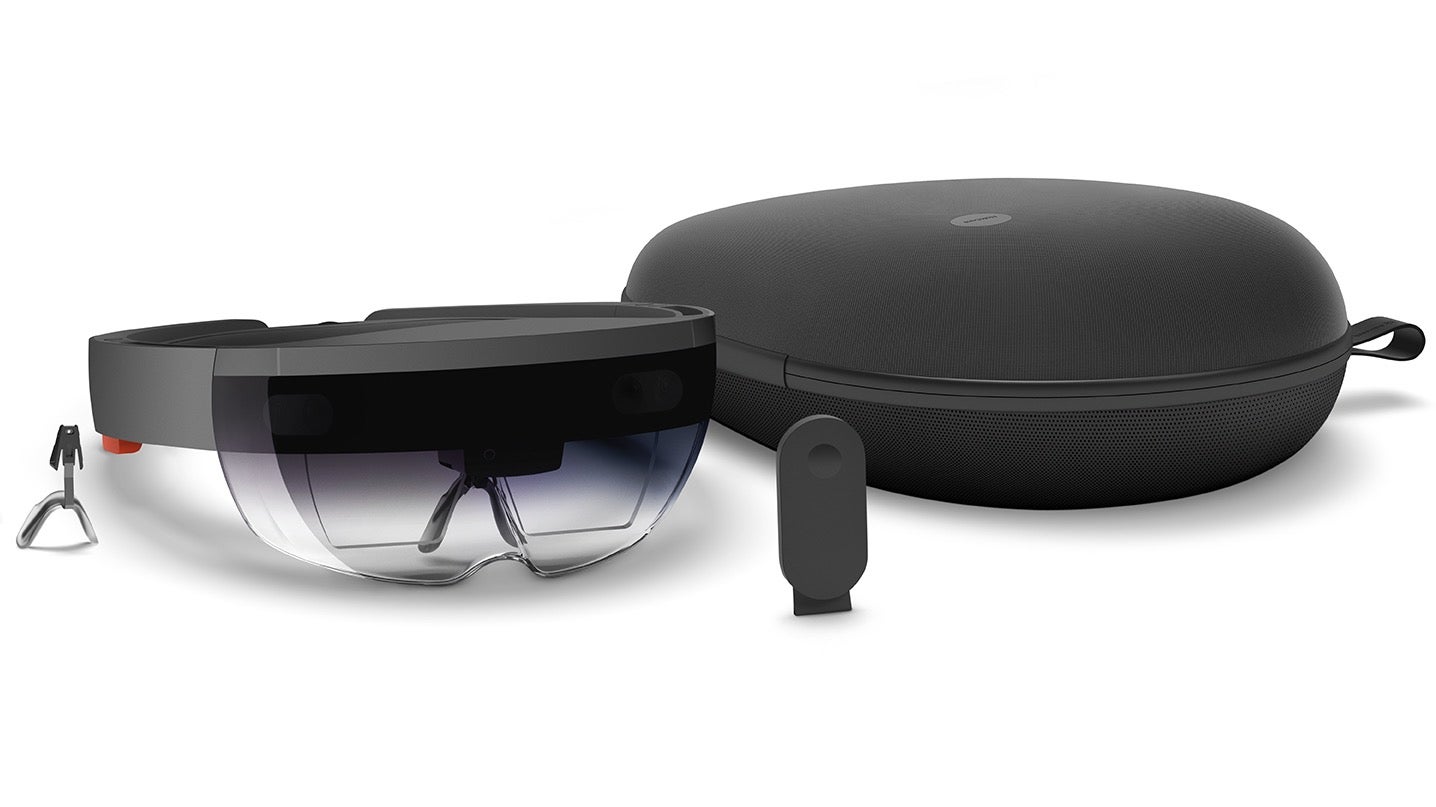You can finally get your hands on Microsoft’s HoloLens—for a hefty price
Just over a year ago, Microsoft announced one of the most radical products it has worked on in years: an augmented-reality headset that merges the real world with the digital, called the HoloLens. Today, the company announced that it’s finally making the headset available to developers, or anyone who can afford the price tag. The HoloLens Development Edition is available to pre-order from today, and will cost $3,000.


Just over a year ago, Microsoft announced one of the most radical products it has worked on in years: an augmented-reality headset that merges the real world with the digital, called the HoloLens. Today, the company announced that it’s finally making the headset available to developers, or anyone who can afford the price tag. The HoloLens Development Edition is available to pre-order from today, and will cost $3,000.
The HoloLens promises to overlay digital projections that can interact with the real world. This could mean playing Minecraft using your coffee table as the game map, or a video game where enemies smash through your actual bedroom’s walls. You could fix a pipe or rebuild an engine with pointers on how to do it floating around your actual project. ”The future of technology will not be confined to just two dimensions,” Alex Kipman, the Microsoft executive championing HoloLens, said in a blog post.
The HoloLens will start shipping March 30, Kipman said, and developers can apply to buy one from today. That’s around the same time that virtual reality products from Facebook’s Oculus and HTC will be reaching consumers. While those are not direct competitors—they are VR systems that envelop the wearer’s field of vision for gaming and video watching, whereas the HoloLens is meant to be more like a futuristic desktop computer experience—it seems unlikely that consumers will want to shell out for more than one giant black box to wear on their face this year.
This version of the HoloLens is not a consumer product, but Microsoft’s pricing is higher than the VR headsets: The Oculus Rift and HTC Vive are both less than $1,000 (or less than $2,000 if you include the new PC you’ll likely need to pick up to get them to work properly), and even the old developer editions of the Rift were only a few hundred dollars. The HoloLens is a more complete product—it doesn’t need an external computer to run, as it has some powerful hardware onboard—but if previous head-mounted computers are anything to go by, the high price won’t help win over early adopters: The original Google Glass cost only $1,500, and that wasn’t exactly a roaring success for Google.
It remains to be seen whether Microsoft can get the HoloLens into the hands of the developers that would create the games and apps necessary to justify a high pricetag on the consumer version. (Microsoft wasn’t immediately available to comment on a timeframe for a consumer version of the HoloLens.)
When Quartz’s Alice Truong tested out the HoloLens last year, she was underwhelmed. The futuristic, digitally augmented world that Microsoft suggests we’ll all be living in with HoloLens seems far from what the device is really capable of doing. One problem: The field of view—what the HoloLens is actually projecting—is very small. “After donning the headset,” Truong wrote, “it’s apparent there’s a big gap between Microsoft’s vision for HoloLens and what it can actually do.”